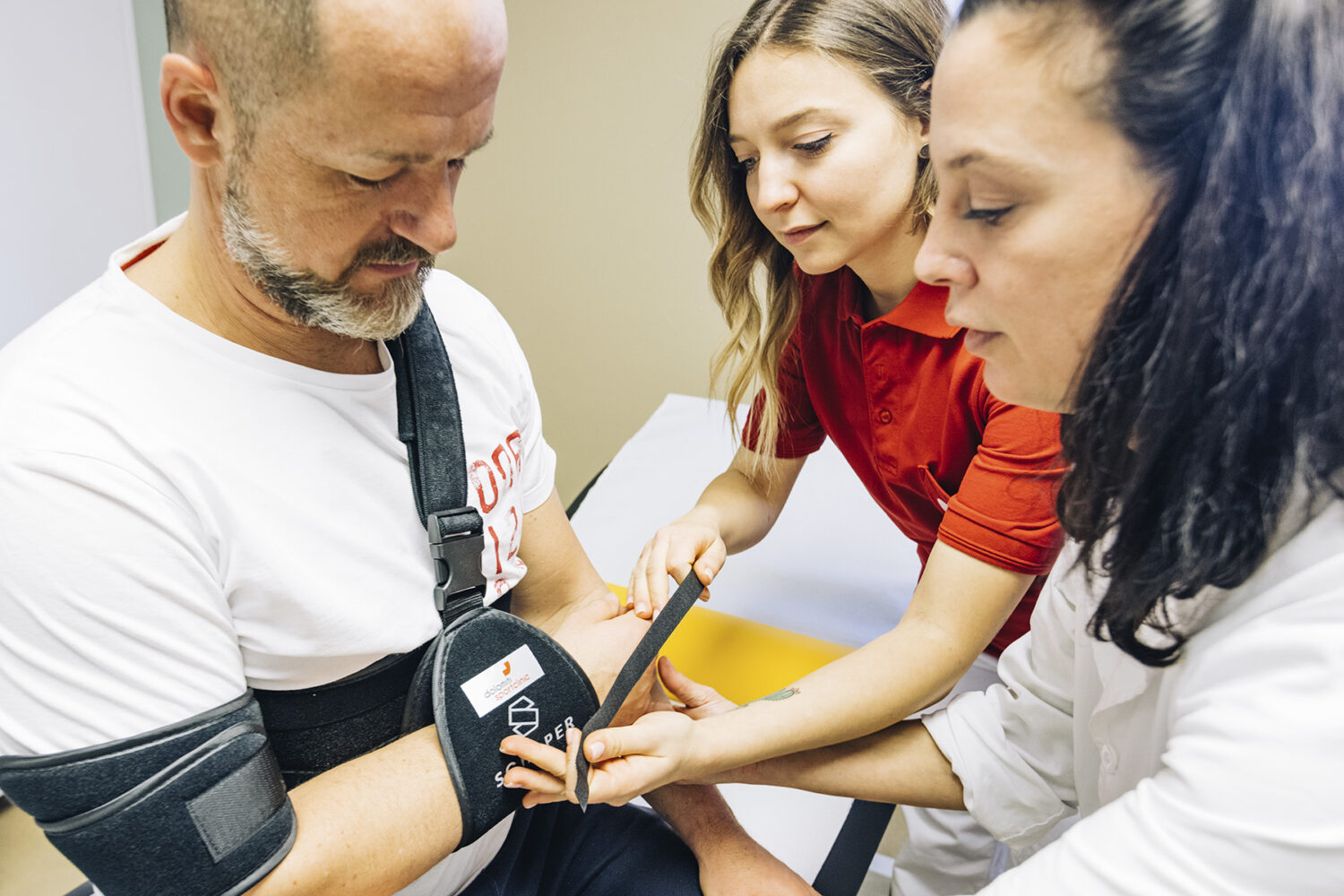What is a Gilchrist and what is it needed for?

The Gilchrist bandage was invented over 100 years ago by the American dermatologist Thomas C. Gilchrist. This support bandage can be applied after injuries or operations to immobilise the shoulder and arm in a certain position and to support them at the same time.
The upper arm of the injured side lies close to the side of the upper body, the elbow is bent at a right angle and the forearm rests on the front of the abdomen.
Once the Gilchrist bandage has been applied, the load of the arm is held by a loop that hangs around the patient’s neck. The injured arm is suspended at the wrist and elbow.
A Gilchrist bandage is often applied after the following injuries:
- Dislocation of the shoulder (shoulder luxation)
- Fracture of the upper arm bone near the shoulder (proximal humerus fracture or humeral head fracture)
- Fracture of the clavicle in the outer region (lateral clavicle fracture)
- Injury to the acromioclavicular joint (AC luxation)
The length of time a Gilchrist bandage must be worn depends on the type of injury or previous surgery. It is usually worn for two to six weeks, followed by targeted restoration of mobility through physiotherapy.
You can find out more about the shoulder here.



